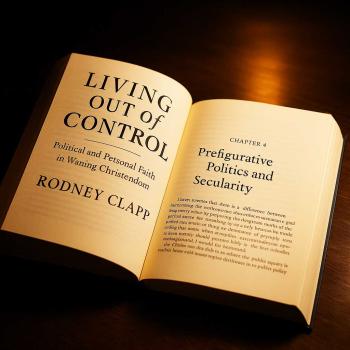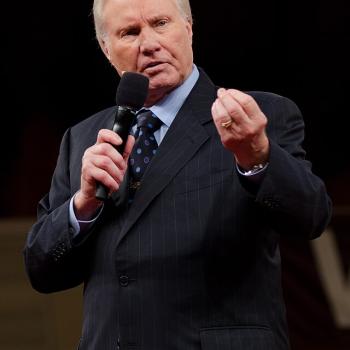Below is a class handout I have prepared to inform students of the primary Christian options (“ideal types”) for thinking about sex, gender and roles (of men and women) in home, church and society. Obviously a book could be written about each of these. Also obviously many individuals and organizations would prefer to be located between them (hybrids). My own study of this question, however, has led me to believe these are the five main types of thinking about this subject among American Christians today. Your responses are welcome so long as they are helpful to my quest—to identify for myself and my students the primary “live options” among Christians for thinking about and living out the relationships between males and females in terms of their roles in church, family and society.
Ideal Types of Christian Responses to Gender Roles
The Question: What should Christians believe and do (practice) with regard to maleness and femaleness in relationship contexts such as marriage, church, government and commerce?
The ideal types below are not meant to be understood as “box categories” but as general directions of Christian thought about sex, gender and social roles and relationships.
- Christian Feminism Strong distinction made between “maleness” and “femaleness” and “feminine” and “masculine” with the latter two (gender) regarded as cultural creations and the former two (sex) regarded as only biological/physiological. There should be no limits or restrictions anywhere, in any relationship context, based solely on sex or gender. Because of the history and lingering cultural-social effects of patriarchy (male privilege) men may have more work to do than women in terms of stepping back, letting go of power and privilege, and women may have more work to do than men in terms of stepping up, taking power and privilege (even through protest). Ultimately, gender distinctions ought to be overcome and both sexes regarded as simply humans with different types of bodies.
*Examples: Rosemary Ruether, Letty Russell, Elizabeth Schüssler Fiorenza
- Christian Egalitarianism Agrees with Christian feminism but seeks to elevate women without disempowering men even in the short term. The emphasis is on role equality without the perceived feminist drive toward role reversal. Patriarchy is bad for both men and women, but matriarchy would also be bad for both men and women. The goal is complete equality without blaming or shaming either sex. Christian egalitarians tend to be dubious about masculinity and femininity (gender) because of their distortions; Christian egalitarians point to Christ as the model for both genders and emphasis mutual submission and servanthood without emphasizing abolition of gender distinctions so long as they are both conformed to Christ’s character.
*Examples: Mary Stuart van Leeuwen, Elizabeth Clark Kroeger, Rachel Held Evans
- Christian Patriarchalism Women are meant by God to submit to men and men are meant by God to rule over women. God has created men to exercise power and women to submit to and help men. There exists a “divine chain of command” in which men are always automatically over and above women; a woman who graciously obeys the man over her will be forgiven by God even if that obedience results in sin. Christian women ought never to hold positions of power or authority over men and ought always to have a Christian man as “covering” when they organize.
*Examples: Bill Gothard, Mark Driscoll (?)
- Christian Complementarianism There are real, essential differences between males and females that cannot be reduced to physiology and biology; “masculinity” and “femininity” are different types of human nature but both are to be valued and affirmed so long as they are not distorted by sin. God’s intention is not for men to “rule over” women or for women always to obey men. But God’s intention is for men to lead in the home and in the church and for women to help men in their leadership. Men’s leadership is to be loving servanthood, providing protection and guidance to women. The model for Christian gender relations is Christ and the church. Wives do not have to obey husbands if they ask them to sin. Husbands who dominate and abuse wives (or children) are not displaying or living out true “male headship.”
*Examples: John Piper, Wayne Grudem, Al Mohler, John Macarthur, Dorothy Patterson
- Christian Egalitarian Complementarianism/Complementarian Egalitarianism The differences between men and women, males and females, cannot be reduced to biology/physiology, but both “femininity” and “masculinity” have been so distorted by sin (the fall and its effects) that they, like everything else, need redemptive healing to be helpful. If redeemed, healed, “feminine” and “masculine” can both be valued as complementary ways of being human but the gender distinction has nothing to do with authority or power over—leadership or submission. True Christian leadership can be expressed and exercised by both men and women together without domination or submission and without obliteration of gender differences. The Kingdom ideal is gender interdependence, not leadership or submission assigned to one sex or gender.
*Examples: Glen Stassen, David Gushee, Roger Olson, Stanley Grenz












